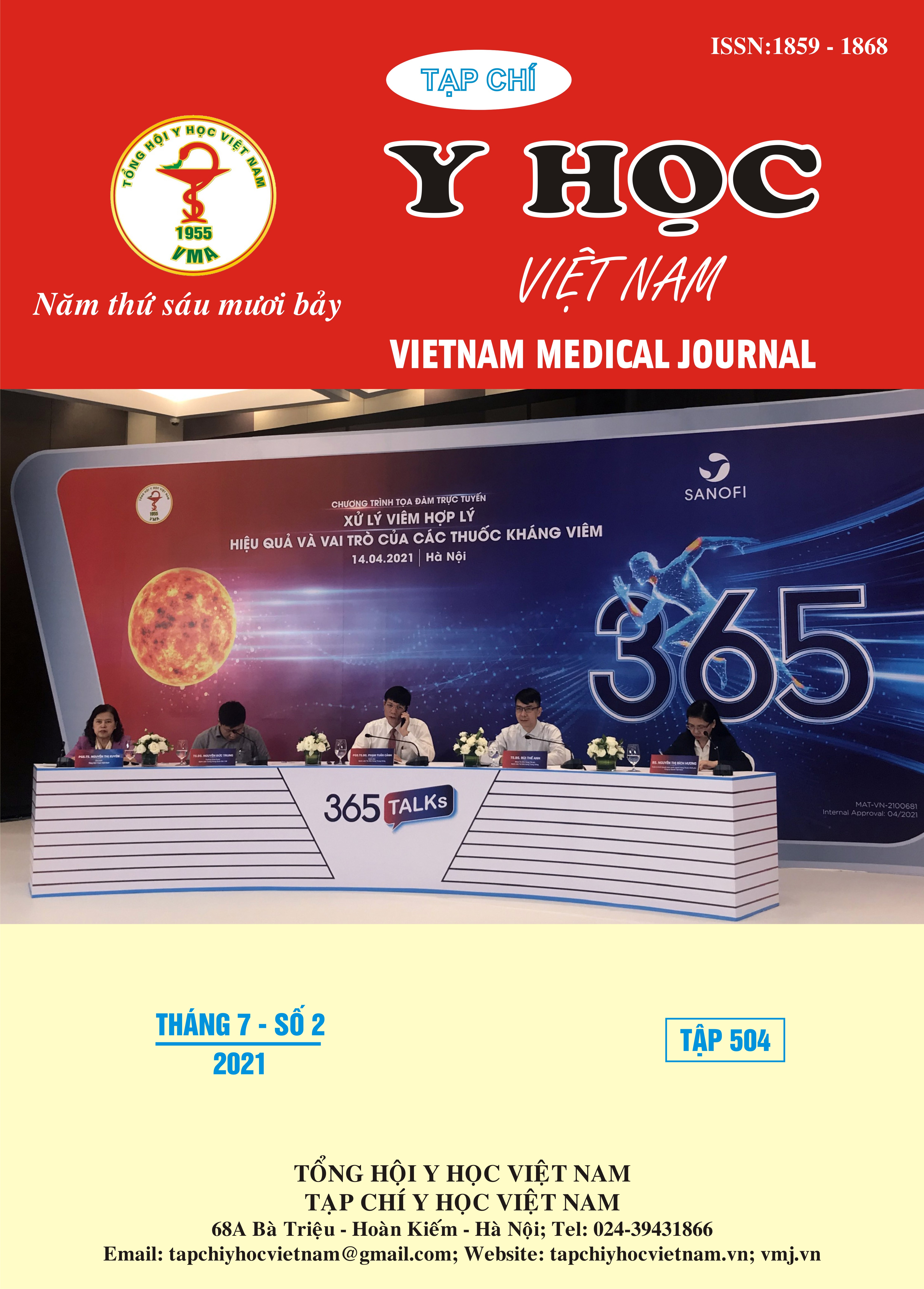THE ASSOCIATION BETWEEN HEMOSTATIC DISORDER AND ORGAN DYSFUNCTION IN PEDIATRIC SEPTIC SHOCK ADMITTED THE INTENSIVE CARE UNIT AT NATIONAL CHILDREN’S HOSPITAL
Main Article Content
Abstract
Background: Hemostatic disorder is a common complication in septic shock, especially disseminated intravascular coagulation is a risk factor for multi-organ dysfunction leading to an increased mortality. Subjects and methods: 56 children were diagnosed with septic shock at the Intensive Care Unit, National Children's Hospital, from August 2019 to August 2020. Set up a cross-sectional descriptive study. Results: At the time of diagnosis, the coagulation disorders incidence were thrombocytopenia (30.4%), prolonged prothrombin time (60.7%), prolonged partial thromboplastin time (53.6%), abnormal fibrinogen concentration (60.7%), increased D-Dimer (98.2%). The group with >2 organ failure had a lower platelet count, more prolonged endogenous and exogenous coagulation, higher D-Dimer level than the group with 2-organ failure (p < 0.05). Group with DIC>4 was a higher risk of failure of >3 organs (OR=10.5), >4 organs (OR=6.1), >5 organs (OR=6.5) compared with the group with DIC≤4, respectively (p < 0.05). Conclusion: In septic shock, the hemostatic disorder is a common complication. Coagulation disorders increase the risk of multi-organ dysfunction.
Article Details
Keywords
Hemostatic disorder, septic shock, multi-organ dysfunction
References
2. Trần Minh Điển (2010). Nghiên cứu kết quả điều trị và một số yếu tố tiên lượng tử vong trong sốc nhiễm khuẩn trẻ em. Luận án Tiến sĩ Y học. Trường Đại học Y Hà Nội.
3. Phùng Nguyễn Thế Nguyên. Rối loạn đông máu trong sốc nhiễm khuẩn trẻ em. Tạp chí Y học TP. Hồ Chí Minh. 2014; 18(1):368-373.
4. Khemani RG, Bart RD, Alonzo TA, Hatzakis G, Hallam D, Newth CJ. Disseminated intravascular coagulation score is associated with mortality for children with shock. Intensive Care Med. 2009; 35(2):327-333. doi:10.1007/s00134-008-1280-8
5. Goldstein B, Giroir B, Randolph A. International pediatric sepsis consensus conference: Definitions for sepsis and organ dysfunction in pediatrics. Pediatric Critical Care Medicine. 2005;6(1):2-8. doi:10.1097/ 01. PCC.0000149131. 72248.E6.
6. Watson RS, Crow SS, Hartman ME, Lacroix J, Odetola FO. Epidemiology and Outcomes of Pediatric Multiple Organ Dysfunction Syndrome. Pediatr Crit Care Med. 2017;18(3_suppl Suppl 1): S4-S16. doi: 10.1097/ PCC.0000000000001047
7. Gaies MG, Gurney JG, Yen AH, et al. Vasoactive-inotropic score as a predictor of morbidity and mortality in infants after cardiopulmonary bypass. Pediatr Crit Care Med. 2010;11(2):234-238. doi:10.1097/ PCC. 0b013e3181b806fc
8. Taylor FB Jr, Toh CH, Hoots WK, Wada H, Levi M; Scientific Subcommittee on Disseminated Intravascular Coagulation (DIC) of the International Society on Thrombosis and Haemostasis (ISTH). Towards definition, clinical and laboratory criteria, and a scoring system for disseminated intravascular coagulation. Thromb Haemost. 2001; 86(5):1327-1330.
9. Trần Minh Điển, Lê Nam Trà, Phạm Văn Thắng. Sốc nhiễm khuẩn trẻ em. Tạp chí Nhi khoa. 2012; 5(4):1-16.
10. Lê Nam Trà, Cao Việt Tùng, Phạm Văn Thắng. Nghiên cứu đặc điểm lâm sàng và cận lâm sàng sốc nhiễm khuẩn trẻ em tại khoa Hồi sức cấp cứu, bệnh viện Nhi Trung ương. Tạp chí Nghiên cứu Y học. 2015; 2:45-52.


